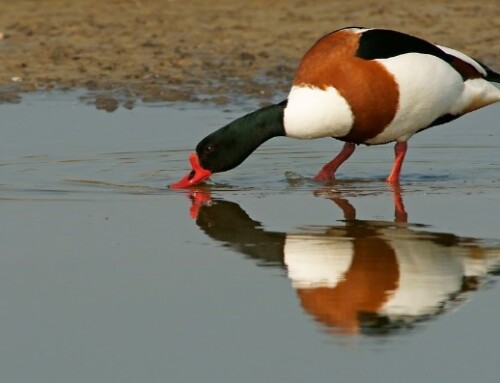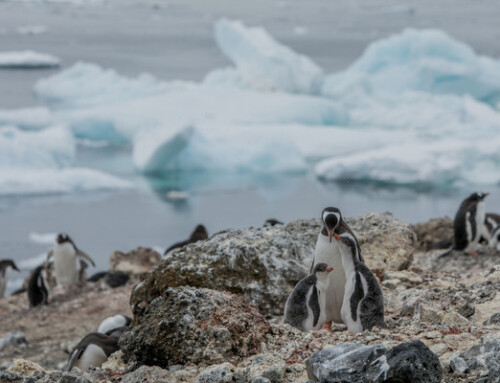Low costs of individual responses to disturbance suggest no significant impact on foraging waders
Catherine Collop
Bournemouth University, U.K.
LINKED PAPER
Variability in the area, energy and time costs of wintering waders responding to disturbance. Collop, C., Stillman, R.A., Garbutt, A., Yates, M.G., Rispin, E. & Yates, T. 2016. IBIS.
DOI: 10.1111/ibi.12399. VIEW
Many coastal and estuarine sites are of vital importance for migratory waterbirds during the non-breeding season due to the plentiful supplies of marine invertebrates to be found in the intertidal mud and sand. The Wash estuary is no exception: it is a large embayment in Eastern England, whose national and international conservation importance is recognised through a suite of designations: Sites of Special Scientific Interest, Special Area of Conservation, Special Protection Area, and Ramsar wetland. In fact, ‘in terms of total numbers, the Wash is the key site for wintering waterbirds in the UK’ (Austin et al. 2014). However, such sites are also popular areas for human recreation and tourism and support important economic activities; even in winter they can experience relatively high numbers of visitors (Fig. 1).

The resulting disturbance can impact birds’ energy budgets by reducing the time and area available for feeding, as well as through the additional energetic costs of fleeing the disturber. Survival will only be affected, however, if birds are unable to compensate by moving elsewhere and/or increasing the amount of time spent feeding or their foraging efficiency (Urfi et al. 1996, Gill et al. 2001, Stillman et al. 2001, Navedo & Masero 2007). A good understanding is therefore needed of the factors affecting birds’ responses to disturbance, and crucially, the circumstances under which disturbance is expected to reduce individuals’ fitness and limit the number of birds that a site can support.
We undertook experimental disturbance experiments at various sites around the Wash to investigate responses to pedestrian disturbance by ten species of wader, and used the results to assess whether or not they are likely to be able to cope with current disturbance frequencies. The most commonly reported measure of response to disturbance is FID – flight initiation distance (also known as ‘escape distance’ or ‘flush distance’) – which measures the distance between the disturbance source and animal when it begins to flee. To be able to estimate the full time and energy costs of responding, we also recorded the amount of time that birds spent in flight and the total time taken to resume feeding.

Larger species responded more strongly (had greater FIDs, spent longer in flight and took longer to resume feeding); response magnitude was greater under milder environmental conditions; and responses varied over both small and large spatial scales. Importantly, for all species, the energetic costs of responding were low relative to our estimates of their daily energy requirements (less than 0.1%) and the lost feeding-opportunity costs of responding were similarly low. Feeding intensity data (Goss-Custard et al. 1977) show that most birds on the Wash are likely to be able to cope with at least a 5% reduction in the available time for feeding (as dictated by the rising and falling of the tides), which we calculated would be caused by between 38 and 162 separate disturbance events per day depending on species and tidal stage. And in our experience, current visitor levels on most parts of the embayment are well below these values, especially at lower shore levels, which in some areas are more than 4 km from the high tide mark. We suggest, therefore, that wintering wader populations on the Wash are not currently significantly negatively impacted by human disturbance during the intertidal foraging period. And this is likely to be the case at other estuarine sites with comparable access levels, visitor patterns, invertebrate food availability and environmental conditions.
We are not suggesting that disturbance will never be a problem for wintering waders, since some species are known to rely on supratidal habitats for foraging when they are not able to meet their energy requirements during the intertidal exposure period, for example due to increased requirements for thermoregulation during extreme cold weather or reduced intertidal exposure during storm events (Goss-Custard 1969, Milsom et al. 1998, Smart & Gill 2003). In such situations, the time and energy costs associated with responding to disturbance could be particularly problematic. Given that the resources available for conservation management are limited, however, the ability to identify situations where intervention would be most effective is essential.
Our findings demonstrate how experimental disturbance studies can go beyond measuring FIDs to determine the size of buffer zones or set-back distances, which on expansive sites like the Wash may not be necessary. By putting greater emphasis on recording time-related measures of responses to disturbance we are able to understand better the constraints on birds’ time and energy budgets. Doing so also adds value by providing the information necessary for parameterising simulation models for understanding population-level impacts of different amounts of disturbance (such as those developed by the Individual Ecology Group at Bournemouth University and to predict the effectiveness of proposed management options.
References
Austin, G.E., Calbrade, N.A., Mellan, H.J., Musgrove, A.J., Hearn, R.D., Stroud, D.A., Wooton, S.R. & Holt, C.A. 2014. Waterbirds in the UK 2012/13: The Wetland Bird Survey. Thetford: British Trust for Ornithology; BTO, RSPB and JNCC in association with WWT. VIEW
Gill, J.A., Norris, K. & Sutherland, W.J. 2001. The effects of disturbance on habitat use by Black-tailed Godwits Limosa limosa. J. Appl. Ecol. 38: 846–856. VIEW
Goss-Custard, J.D., Jenyon, R.A., Jones, R.E., Newbery, P.E. & Williams, R.L.B. 1977. Ecology of the Wash II. Seasonal variation in feeding conditions of wading birds (Charadrii). J. Appl. Ecol. 14: 701–719. VIEW
Milsom, T.P., Ennis, D.C., Haskell, D.J., Langton, S.D. & McKay, H.V. 1998. Design of grassland feeding areas for waders during winter: the relative importance of sward, landscape factors and human disturbance. Biol. Conserv. 84: 119–129. VIEW
Navedo, J.G. & Masero, J.A. 2007. Measuring potential negative effects of traditional harvesting practices on waterbirds: a case study with migrating curlews. Anim. Conserv. 10: 88–94. VIEW
Smart, J. & Gill, J.A. 2003. Non-intertidal habitat use by shorebirds: a reflection of inadequate intertidal resources? Biol. Conserv. 111: 359–369. VIEW
Stillman, R.A. & Goss-Custard, J.D. 2002. Seasonal changes in the response of oystercatchers Haematopus ostralegus to human disturbance. J. Avian Biol. 33: 358–365. VIEW
Urfi, A.J., Goss-Custard, J.D. & Durell, S. 1996. The ability of Oystercatchers Haematopus ostralegus to compensate for lost feeding time: field studies on individually marked birds. J. Appl. Ecol. 33: 873–883. VIEW
About the author
Catherine Collop is a PhD researcher at Bournemouth University and interested in human-wildlife interactions and evidence-based conservation management. Her research focusses on understanding wintering waterbirds’ responses to human disturbance, and determining the resulting population consequences using fieldwork and simulation modelling. Her studentship was joint-funded by Bournemouth University and British Association for Shooting and Conservation.
View Catherine’s full profile
Follow Catherine on Twitter @muddybirder
Image credit
Featured image: Dunlin flock Calidris alpina © Markus Hoppe
Blog posts express the views of the individual author(s) and not those of the BOU.
If you want to write about your research in #theBOUblog, then please see here.





